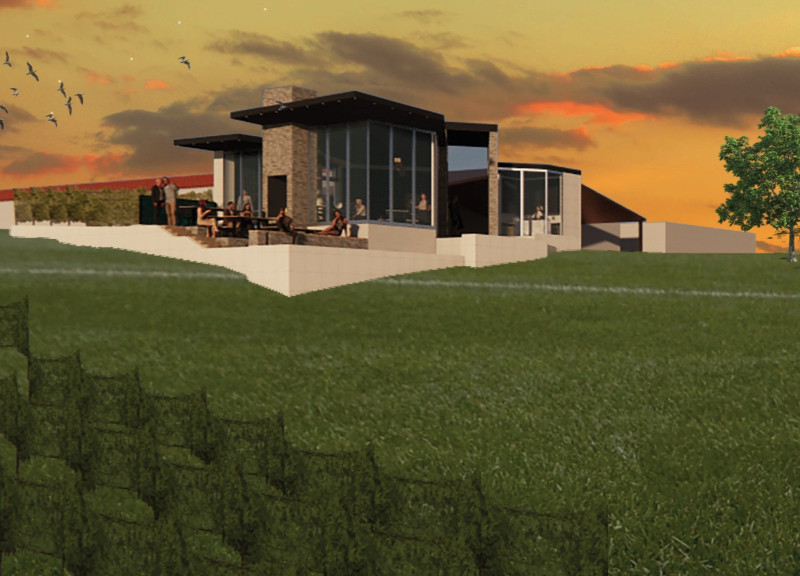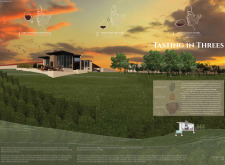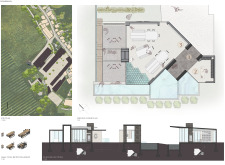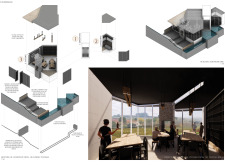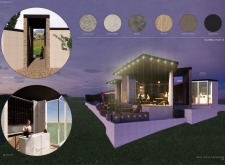5 key facts about this project
The design focuses on creating a wine tasting experience, set against the backdrop of vast vineyards. The building organizes the tasting process into three main phases: Observing, Smelling, and Tasting. This structure not only enhances the functional aspects of the space but also strengthens the connection between the venue and the surrounding landscape. It invites guests to engage fully with both the wine and its origins.
Observing
Guests enter the tasting room through a portal situated between two large sections of the building. This design element allows for a limited but intriguing view of the vineyards, creating anticipation as visitors step inside. This initial experience establishes a direct visual link to the landscape, making it an essential part of the journey ahead.
Smelling
As visitors proceed, they encounter a bar area on the left. Here, wine is served alongside flavor enhancers that ignite the senses. The aromas from both the beverages and food contribute to the atmosphere, enriching the wine tasting experience. This thoughtful arrangement encourages guests to be aware of the sensory elements involved in enjoying wine, adding depth to their visit.
Tasting
The heart of the experience is found in the tasting room, which is designed to provide expansive views of the vineyards. This area includes both a wide main view and a more intimate secondary perspective that connects with an outdoor patio. Access to the patio invites guests to interact more closely with the natural elements, allowing them to enjoy their wine tasting in a setting that emphasizes the beauty of the landscape.
Water Features
Water is an important aspect of the design, serving both practical and aesthetic purposes. Its presence symbolizes a gentle motion that surrounds the structure. Incorpation of water features also offers passive cooling and supports rainwater harvesting. These elements contribute to a serene atmosphere that aligns well with the focus on wine tasting, reinforcing the connection to the local landscape.
The placement of training vines next to the Monte d'Oiro logo provides a chance for guests to take photos without needing to leave the property. The furniture is carefully designed to accommodate different group sizes, with adequate storage for glasses and wine to ensure a smooth tasting experience. Additionally, local artists have the opportunity to display their work in a featured ceramic tile area, further deepening the connection to the community.
Overall, the design integrates the sensory journey of wine tasting with the natural beauty of the vineyards, ensuring that visitors remain aware of the landscape's presence throughout their experience. The spaces encourage continuous exploration of both the wine and its surroundings, creating a comprehensive engagement with the local environment.


